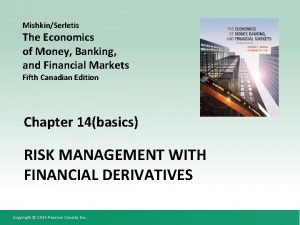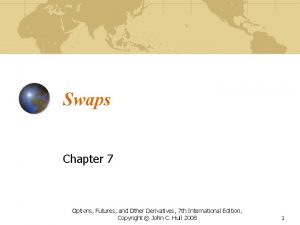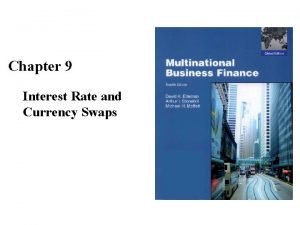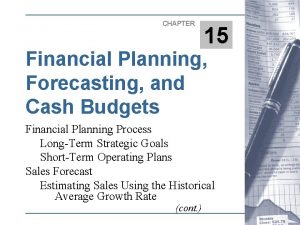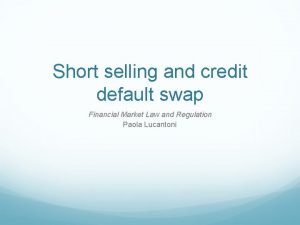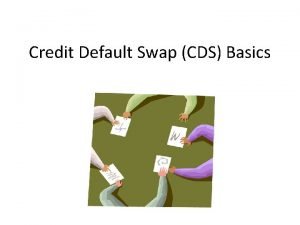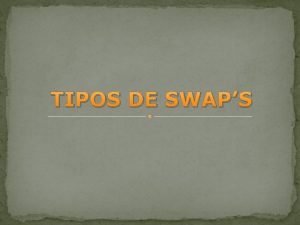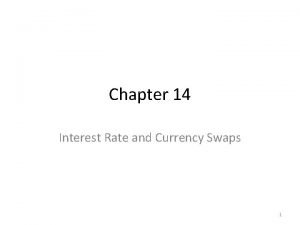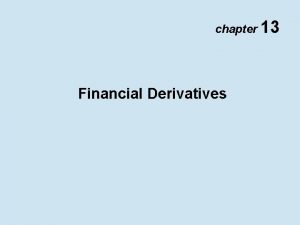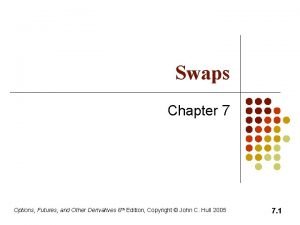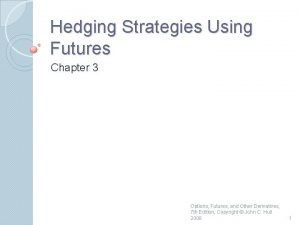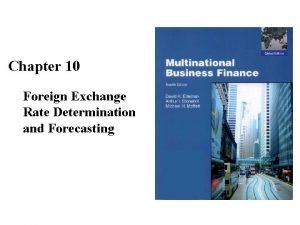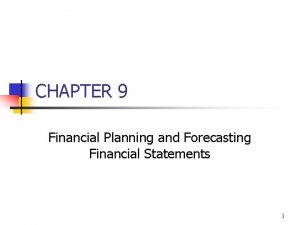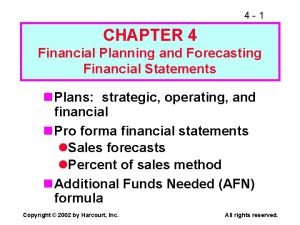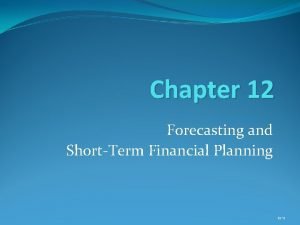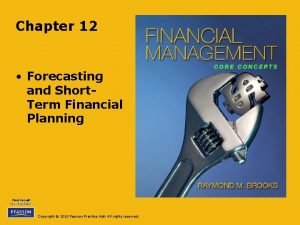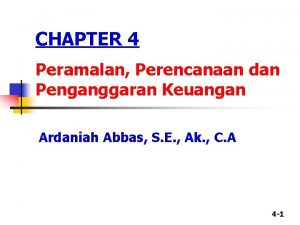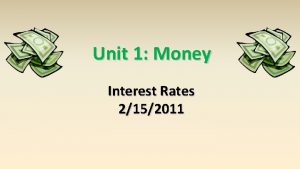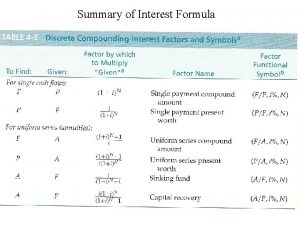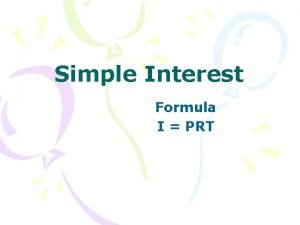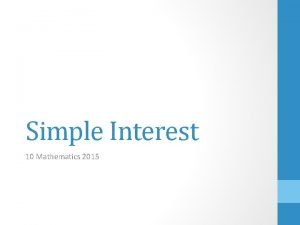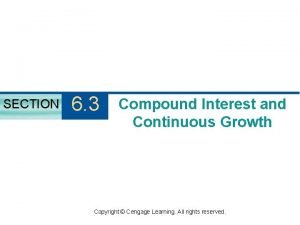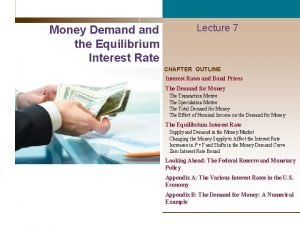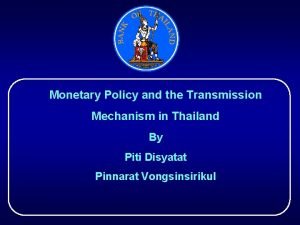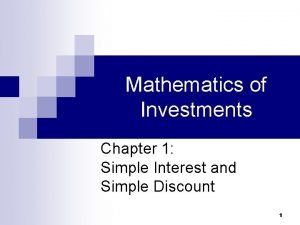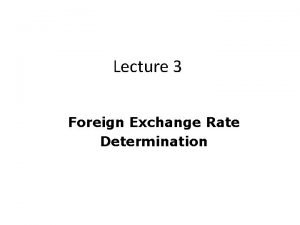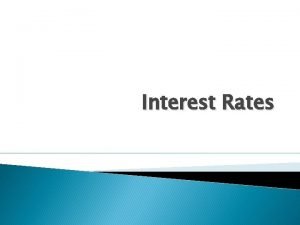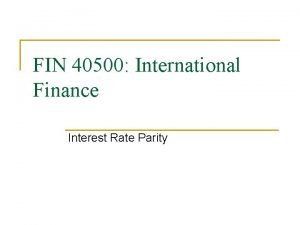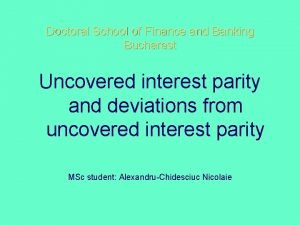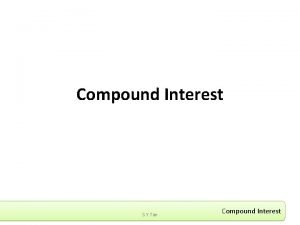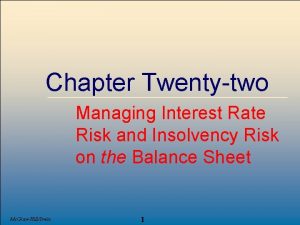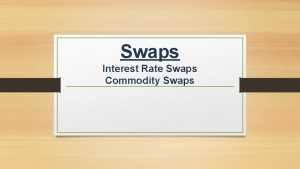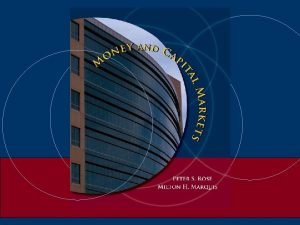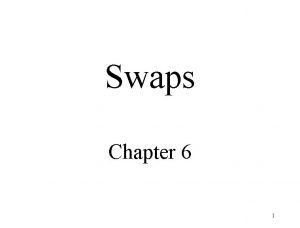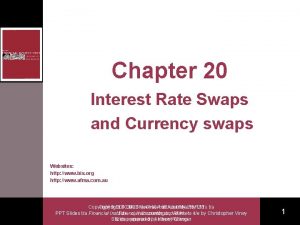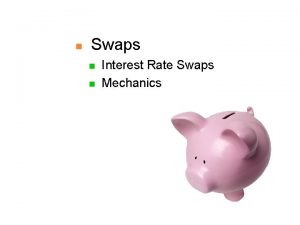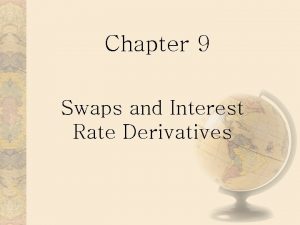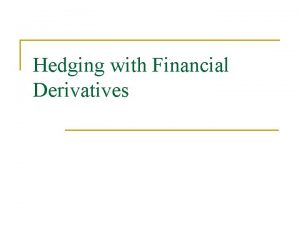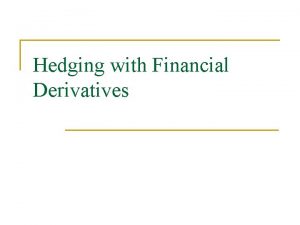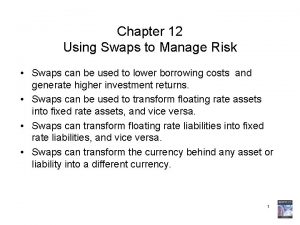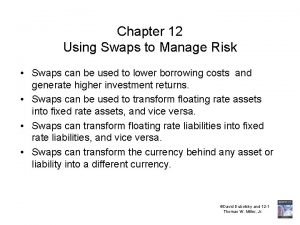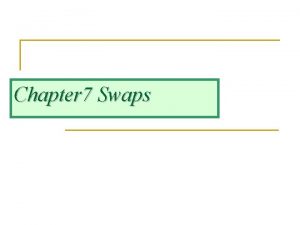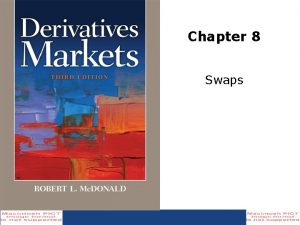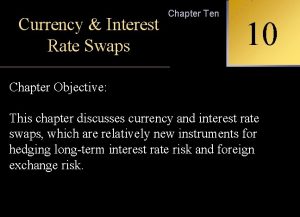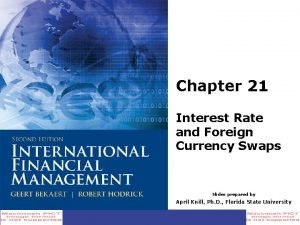Chapter 9 Interest Rate Forecasting Hedging Swaps Financial
















































- Slides: 48


Chapter 9 Interest Rate Forecasting & Hedging: Swaps, Financial Futures, and Options Mc. Graw-Hill/Irwin Copyright © 2008 by The Mc. Graw-Hill Companies, Inc. All Rights Reserved.

Learning Objectives ù To understand why financial analysts today usually choose hedging (protecting) against losses from changing interest rates and asset prices rather than attempting to forecast interest rates or the prices of financial assets. ù To examine several popular hedging tools, including interest rate swaps, financial futures, and option contracts. 9 -3

Introduction ù For actively traded assets, demand supply forces are continually shifting, such that investors interested in these assets must constantly stay abreast of the latest developments. ù This chapter focuses on how investors can hedge against risk associated with the unfavorable fluctuations in interest rates and asset prices. 9 -4

Implicit Interest-Rate Forecasts and Asset-Prices ù Asset prices inversely related to interest rates ù Particularly pronounced with fixed-income securities ù Also true for equity valuation ù So factors that influence future interest rates likewise impact future asset prices 9 -5

Implicit Interest-Rate Forecasts and Asset-Prices ù Interest rates difficult to predict ù Do tend to follow the business cycle ù Market interest rates tend to rise during economic expansion ù Rates fall during economic contractions ù More pronounced for short-term rates ù Reflected in current interest rate expectations 9 -6

Implicit Interest-Rate Forecasts and Asset-Prices Generate implied market forecasts ù This forecasting technique uses the public’s expectations to help predict the future ù Expectations about future interest rates are embedded in the market prices of financial assets 9 -7

Implicit Interest-Rate Forecasts and Asset-Prices Other factors also affect interest rates ù Time patterns in rates close to a random walk ù Changes in interest rates may well be described as random ù Unpredictable ù Over the long-run ù Long-run mean reversion ù Some long-run average to which rates revert ù Rates tend to be more volatile than short-term 9 -8

Implicit Interest-Rate Forecasts and Asset-Prices ù Financial derivatives ù Created in large measure to capture implicit forecasts of future interest rates and asset prices ù Forecasts from derivatives are among the best available ù Valuable to portfolio managers ù In 2006 derivatives value worldwide $280 trillion ù Use in hedging to minimize risk 9 -9

Implicit Interest-Rate Forecasts and Asset-Prices ù Hedging refers to the act of coordinating the buying and selling of a commodity or financial claim to protect against the risk of future price fluctuations ù Tends to lower interest rate and price risk ù Also tends to reduce the profit potential from correctly forecasting interest-rate and asset-price changes ù Used by risk averse investors 9 -10

Implicit Interest-Rate Forecasts and Asset-Prices ù The most popular hedging tools used today include interest-rate swaps, financial futures, and option contracts. 9 -11

Interest Rate Swaps ù Interest rate swap is a transaction between two participating businesses ù Borrow from different lenders ù Exchange interest payments ù Contractual period ù Help offset maturity mismatch between liabilities and assets ù Most are between $25 and $100 million of notional amount 9 -12

Interest Rate Swaps 9 -13

Interest Rate Swaps ù The result is usually lower interest expense for both firms and a better balance between cash inflows and outflows for both firms 9 -14

Interest Rate Swaps ù Swaps work because the interest-rate spreads related to default risk (called quality spreads) are generally greater in the long-term capital market than they are in the short-term money market 9 -15

Interest Rate Swaps Suppose Can borrow in the long-term the short-term bond market at loan market at Low-credit-rated borrower High-credit-rated borrower 11% 10% Quality spread 1% Prime rate + 0. 50% Prime rate 0. 50% ù Both firms can save on interest costs if each borrows in the market in which it has the comparative interest cost advantage 9 -16

Interest Rate Swaps The Swap Agreement Low-credit-rated borrower gets a short-term loan from its bank at a floating interest rate (prime rate +. 50%), but pays out the fixed interest cost on the long-term bonds issued by its swap partner. Saves 0. 25% on long-term rate. High-credit-rated borrower issues long -term bonds Pays 10% carrying a fixed interest rate (10%), but pays out a Pays prime rate portion of the floating short-term –. 25% interest rate owed by its swap partner. Saves 0. 25% on short-term rate. 9 -17

Interest Rate Swaps ù Today, borrowers often negotiate swap agreements with lenders at the same time as when they reach an agreement on a loan 9 -18

Interest Rate Swaps The Synthetic Fixed-Rate Loan Borrower Swap agreement: Pays fixed interest rate Pays floating interest rate Lender or other swap partner Loan Pays floating agreement: loan rate Lender 9 -19

Interest Rate Swaps ù Swaps help to cover interest-rate risk but do not necessarily reduce credit (default) risk ù The notional amount of a swap is not at risk, so a swap is typically less risky than a bond ù Swaps are subject to interest-rate risk ù Shifts in market interest rates can alter the value of existing swap agreements ù Rising rates tend to increase risk of default ù Swaps can also be hedged to reduce these risks 9 -20

Financial Futures Contracts ù In a typical financial futures contract, the seller agrees to deliver a specific security at a specific price at a specific time in the future ù Hedging in futures does not reduce overall risk in the market ù It is a low-cost method of transferring the risk ù Only unanticipated changes in prices or interest rates ù Someone must still bear the risk 9 -21

Financial Futures Contracts Leading Futures and Options Exchanges Around the World 9 -22

Examples of Daily Price Quotations for US Treasury Futures ù US Treasury bond futures market ù One of the most active markets forward delivery ù Popular due to safety and liquidity ù Still substantial market risk ù More volatile than the Treasury bill market ù Parallel markets foreign government bonds on other exchanges ù All bonds delivered under a particular contract are from the same bond issuance 9 -23

Examples of Daily Price Quotations for US Treasury Futures 9 -24

Examples of Daily Price Quotations for US Treasury Futures ù Futures basic trading unit ù $100, 000 bond at par ù Minimum maturity of 15 years ù Base coupon rate is 6% ù Delivery by book entry ù Pricing expressed as percentage of par ù Open interest is the number of contracts outstanding for that maturity 9 -25

Why Hedging Can Be Effective ù Key to futures market is that spot prices are correlated to prices in the futures market ù Futures prices is an expected value of the spot value on delivery ù Adjusted for storage, insurance and financing ù Hedging essentially involves adopting equal and opposite positions in the spot and futures market for the same asset ù Risk is the degree to which the current and future spot markets are related 9 -26

Why Hedging Can Be Effective Basis ù Basis for a futures contract = Spread between the cash(spot) price of a commodity or financial asset and the futures price for that same commodity or asset at the same point of time 9 -27

Why Hedging Can Be Effective Principle of convergence ù As delivery date approaches the basis narrows ù At delivery the basis should be zero, ignoring transaction costs ù Profitability of a futures contract is a function of the change in the basis before the delivery date 9 -28

Why Hedging Can Be Effective Measure of basis risk Volatility ratio for a futures contract = (Percentage change in spot price of an asset)/(Percentage change in price of the futures instrument used for hedging the asset) ù The more stable the basis, the closer the ratio is to one 9 -29

Financial Futures Contracts ù Basically, three types of hedges are used in the financial futures market today ù A long hedge involves the purchase of futures contracts today by an investor who must buy the actual securities at a later date ù A short hedge involves the sale of futures contracts today by an investor who must sell the actual securities at some later point ù A cross hedge involves futures contracts where the underlying asset is different from the actual asset that must be traded at a later date 9 -30

Financial Futures Contracts An Example of a Long Futures Hedge Source: Based on an example developed by the Chicago Board of Trade 9 -31

Financial Futures Contracts An Example of a Short Futures Hedge Source: Based on an example developed by the Chicago Board of Trade 9 -32

Financial Futures Contracts Profits from buying futures contracts (the long hedge) Fp - original purchase price Profits from selling futures contracts (the short hedge) Fp - original purchase price Profit Fp Area of gain 0 – Fp Loss Fp Futures contract (or asset) price 0 Area of gain Fp Futures contract (or asset) price Loss 9 -33

Financial Futures Contracts Futures contracts offered on exchanges ù The number of futures markets and contract have expanded in recent years ù Domestic and foreign government bonds ù Eurodollar and other Eurocurrency deposits ù Federal funds loans, T-bills, and LIBORpriced deposits ù Common stock indexes ù Foreign currencies ù Interest rate swaps 9 -34

Option Contracts ù An option contract is an agreement between a buyer and seller (the option writer) to grant the holder of the contract the right to buy or sell a futures contract or some other specified asset at a specified price (the strike price) before the contract expires 9 -35

Option Contracts ù Call options give the contract holder the right (but not the obligation) to buy ù On or before a prespecified date ù At a prespecified price ù Put options are parallel, but give the contract holder the right (but not the obligation) to sell ù To purchase an option, must pay an option premium ù Options traded on organized exchanges ù Standardized ù Use clearinghouse 9 -36

Option Contracts Examples of Price Quotations on Option Contracts 9 -37

Option Contracts ù The two most common uses of options involve ù Protecting an investment against falling interest rates by using call options Before-tax profit = market price – strike price – option premium ù Protecting an investment against rising interest rates by using put options Before-tax profit = strike price – market price – option premium 9 -38

Risks, Costs, and Rules for Trading In Derivatives ù Futures and options trading has its risks and costs ù Risks: basis risk, margin risk, liquidity risk ù Costs: brokerage fees, margin accounts ù The decision to trade financial futures and option contracts is a cost versus benefit issue 9 -39

Risks, Costs, and Rules for Trading In Derivatives ù The rapid expansion of derivatives trading has also led to new accounting rules to promote fuller disclosure of risk exposures and to permit management and outsiders to judge the effectiveness of these hedging techniques 9 -40

Options Offered on Exchanges ù Federal funds, Eurodollar, and Eurodeposit ù Government debt ù Currency futures ù Select stock market indexes ù LEAPS (long-term) ù FLEX (shape option contracts) 9 -41

Markets on the Net ù British Bankers Association at www. bba. org. uk ù Chicago Board of Trade at www. cbot. com ù Chicago Board Options Exchange at www. cboe. com ù Chicago Mercantile Exchange at www. cme. com ù Commodity Futures Trading Commission at www. cftc. com ù Encyclopedia. com at encyclopedia. com 9 -42

Markets on the Net ù In-The-Money at in-the-money. com ù London International Financial Futures and Options Exchange at www. liffe. com ù National Bureau of Economic Research at nber. org ù National Futures Association at nfa. futures. org ù The American Stock Exchange at www. amex. com 9 -43

Markets on the Net ù The Brussels Exchange at www. tripadvisor. com ù The Financial Pipeline: Derivatives Concepts at www. finpipe. com/derivglossary. htm ù The International Securities Exchange at www. iseoptions. com ù The New York Board of Trade at www. nyce. com 9 -44

Chapter Review ù Introduction ù Interest-rate and asset-price forecasting ù The business cycle and seasonality ù The economy, Interest rates, and the daunting challenge of forecasting ù Implied rate and price forecasting ù Interest-rate and asset-price hedging strategies 9 -45

Chapter Review ù Interest rate swaps ù What are swaps? ù How swaps work ù The risks of swapping 9 -46

Chapter Review ù Financial futures contracts ù The nature of futures trading ù Why hedging can be effective ù The purpose of trading in financial futures ù Assets covered by financial futures contracts ù The exchanges where futures trading occurs ù Types of hedges ù Payoff diagrams for long and short futures contracts 9 -47

Chapter Review ù Option contracts on financial futures ù Basic types of option contracts ù Uses of options ù Payoff diagrams for valuing options ù Risks, costs, and rules for trading in derivatives ù Risks and costs associated with futures and options ù Accounting rules for transactions Involving derivatives 9 -48
 Advantages of interest rate swaps
Advantages of interest rate swaps What is real interest rate and nominal interest rate
What is real interest rate and nominal interest rate Hedging interest rate risk with futures
Hedging interest rate risk with futures Swaps
Swaps Considering interestrate swaps, the swap rate is
Considering interestrate swaps, the swap rate is Cap rate interest rate relationship
Cap rate interest rate relationship Chapter 15 financial forecasting for strategic growth
Chapter 15 financial forecasting for strategic growth Credit default swap short
Credit default swap short Selling credit default swaps
Selling credit default swaps Credit default swap
Credit default swap Banker swaps rat race for bus lane
Banker swaps rat race for bus lane Mercados de forwards y swaps
Mercados de forwards y swaps Swapsmuy
Swapsmuy Unwinding swaps
Unwinding swaps Advantages and disadvantages of derivatives
Advantages and disadvantages of derivatives Swaps example
Swaps example Futures hedging strategies
Futures hedging strategies Effective interest rate formula
Effective interest rate formula Simple and compound interest
Simple and compound interest Exchange rate forecasting techniques
Exchange rate forecasting techniques Exchange rate determination and forecasting
Exchange rate determination and forecasting Financial planning and forecasting
Financial planning and forecasting Financial planning and forecasting
Financial planning and forecasting Short term financial planning process
Short term financial planning process Financial planning and forecasting problems with solutions
Financial planning and forecasting problems with solutions Financial analysis planning and forecasting
Financial analysis planning and forecasting Planning budgeting and forecasting
Planning budgeting and forecasting Long term and short term financial planning
Long term and short term financial planning Interest rate effect
Interest rate effect Discrete compounding
Discrete compounding Prt = i
Prt = i How to find principal amount
How to find principal amount Compound interest formula explained
Compound interest formula explained Apr vs ear
Apr vs ear Fisher's equation
Fisher's equation Effective rate of interest
Effective rate of interest Money demand and interest rate
Money demand and interest rate Interest rate transmission mechanism
Interest rate transmission mechanism Contractionary money policy
Contractionary money policy Simple interest business math
Simple interest business math Ppp theory of exchange rate
Ppp theory of exchange rate Interest rate quotes
Interest rate quotes Cheapest to deliver
Cheapest to deliver Interest parity
Interest parity Uncovered interest rate parity formula
Uncovered interest rate parity formula Interest sy
Interest sy Interest rate parity example
Interest rate parity example Interest rate duration
Interest rate duration Covered interest arbitrage parity
Covered interest arbitrage parity
